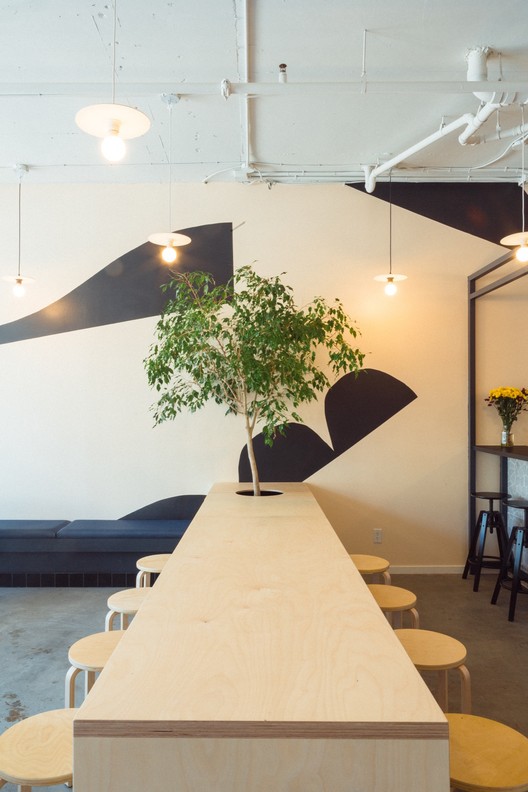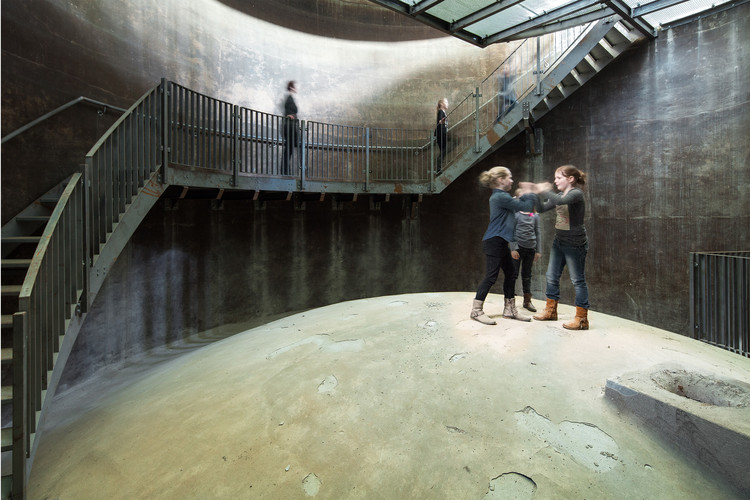Flag - Pole Ryuichi Ashizawa Architects - associates
2018-04-26 19:00
架构师提供的文本描述。该项目是位于日本东京南部的丹宁佐夫住宅区的一个住宅和诊所。丹宁佐夫是根据埃比尼泽·霍华德的“花园城市”概念规划的,自1923年以来一直在出售土地。50%的建筑覆盖率是必须的,以确保每一块土地的花园空间。
Text description provided by the architects. The project is a house and clinic in Dennenchofu Residential Area, at the southern periphery of Tokyo, Japan. Dennenchofu were planned based on Ebenezer Howard’s ‘Garden City’ concept and lots were being sold since 1923. Fifty percent building coverage was mandatory to secure garden space for each lot.
在过去,这里住满了建在大遗址上的豪宅。然而,近年来,由于遗产的继承,土地被分割,减少了每个地段的园林空间,以至于根本没有花园。该项目的场地也按遗产划分,形成了一个约90平方米的“旗杆”场地。这片土地被挤在相邻的房子之间,只有一条2.5米宽的小巷,作为从街道进入的通道。
In the past it was populated with mansions built on large sites. However in recent years lots have been split by inheritance, reducing each lots’ space for gardens, to a point where there are no gardens at all. The site of the project was also divided by inheritance, which resulted in a ‘flag and pole’ site of about 90 m2. The lot is squeezed between adjacent houses with only a 2.5m wide alley as access from the street.
RAA通过检查站点周围的“旗杆”站点开始了设计过程。一般来说,房屋是在场地的“旗帜”部分建造的,而“杆”部分则被用作入口和停车空间,没有留下花园的空间。此外,在人口稠密地区建造的常规方法导致了最低限度的自然通风和光线暴露。
RAA started the design process by examining ‘flag and pole’ sites around the site. In general, houses were built in the ‘flag’ portion of the site, whereas the ‘pole’ portion were used as the entrance and parking space, leaving no space for a garden. Moreover, the regular approach, built in a densely populated area, resulted in minimum natural ventilation and light exposure.
基于上述条件,进行了模型研究和计算流体力学(CFD)模拟,符合当地规范和法规。所面临的挑战是获得一个建筑质量,以便最大限度地利用其场地的形状,使其能够最佳地通风和自然光线照射,同时也为人口稠密的居民区中的一个花园提供足够的空间。
Based on the afore-mentioned conditions, model studies and Computational Fluid Dynamics (CFD) simulations were done, with compliance to local codes and regulations. The challenge was to obtain a building mass that could make maximum use of its’ site’s shape that would allow optimum ventilation and natural light exposure, while also providing adequate space for a garden in the midst of the densely populated residential area.
最后的质量设法融合‘旗子’和‘杆’部分的网站。房子水平和垂直弯曲,确保阳光照射和风流到房子的每一个部分,从顶部到底层,从外面到房子的深处。曲面由胶合板固定在柱上,整个内部覆盖胶合板。
The final mass manages to fuse the ‘flag’ and ‘pole’ portion of the site. The house curves horizontally and vertically, ensuring sun exposure and wind flow to every part of the house, from top to ground floor, outer to the depths of the house. The curved surface was made by fixing plywood on to the column, and the whole interior is clad in plywood.
该项目包括一个附属于住宅的诊所(位于地面)。二楼狭长的居住空间一直延伸到露台,露台悬挑在停车位上,可以看到对面道路上的公园。三楼是专门为卧室和屋顶而设的。在这幢三层楼高的房子旁边,这座狭小的建筑的南边已经有了一座花园.这样,房子已经成为独特的,当代诠释埃比尼泽霍华德的“花园城市”的概念。
The program includes a clinic (located on the ground level) attached to the residence. The elongated living space at the second floor continues to the terrace, which cantilevers over the parking space, providing view to the park on the opposite road. Third floor is dedicated to the bedrooms and rooftop. Beside the three-story house, southern part of the narrow site has been dedicated to a garden. In this way, the house has become a unique, contemporary interpretation of Ebenezer Howard’s ‘Garden City’ concept.
 举报
举报
别默默的看了,快登录帮我评论一下吧!:)
注册
登录
更多评论
相关文章
-

描边风设计中,最容易犯的8种问题分析
2018年走过了四分之一,LOGO设计趋势也清晰了LOGO设计
-

描边风设计中,最容易犯的8种问题分析
2018年走过了四分之一,LOGO设计趋势也清晰了LOGO设计
-

描边风设计中,最容易犯的8种问题分析
2018年走过了四分之一,LOGO设计趋势也清晰了LOGO设计





































































